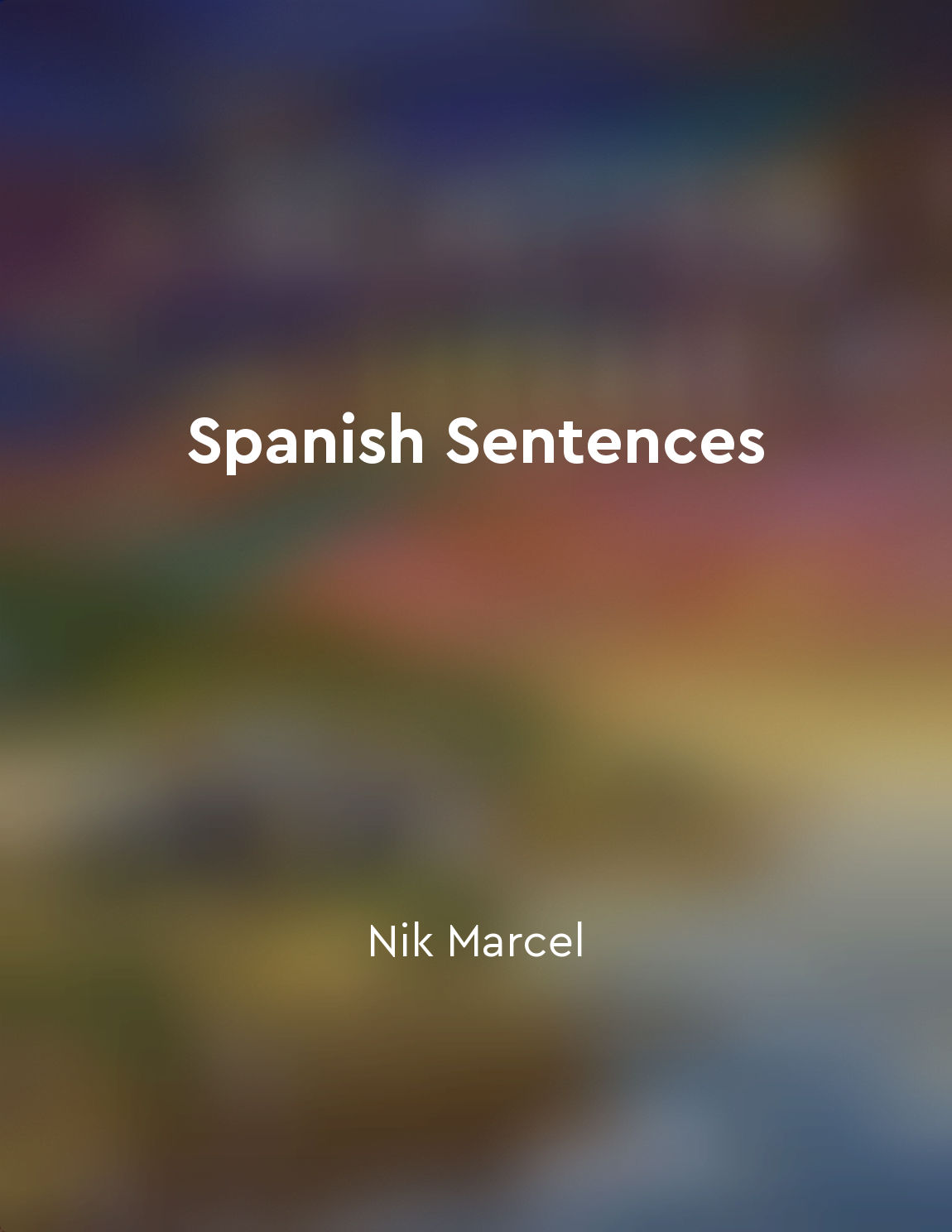Possessive pronouns in Spanish show ownership or relationships from "summary" of Spanish Sentences by Nik Marcel,Robert P. Stockwell,J. Donald Bowen,Ismael Silva-Fuenzalida
Possessive pronouns in Spanish are essential in indicating ownership or relationships between people and objects. These pronouns serve as a way to express possession without having to use additional words. They are used to show who something belongs to or who is related to something. In Spanish, possessive pronouns agree in gender and number with the noun they are referring to. This means that they must match the noun in both gender (masculine or feminine) and number (singular or plural). For example, "mi libro" (my book) uses the possessive pronoun "mi" to show ownership of the book, with "mi" matching the gender and number of the noun "libro." Possessive pronouns in Spanish can also b...Similar Posts
The imperative mood gives commands or instructions
The imperative mood is used when giving commands or instructions in Spanish. It is a direct way of telling someone what to do. ...
Language is a form of expression
Language serves as a powerful tool for individuals to convey their thoughts, emotions, and ideas. It is through language that p...

Adjectives and adverbs provide description and detail
Adjectives and adverbs play a crucial role in providing description and detail in English grammar. These words serve to enhance...
Benefits of bilingualism in the business world
In today's globalized business world, the ability to speak more than one language is becoming increasingly valuable. Bilinguali...

Learning Spanish
Learning Spanish is a journey that can open up a whole new world of possibilities for you. It is not just about memorizing voca...
Dealing with emergencies
When a situation arises that requires immediate attention, it is important to know how to handle it effectively. Emergencies ca...
Interjections as expressions of emotion in language
Interjections play a crucial role in language as they serve as expressions of emotion. These words or phrases are used to conve...
Comparative and superlative adjectives
Comparative and superlative adjectives are used to compare two or more things, people, or qualities. Comparative adjectives are...
Immersive short stories in Spanish
Immersive short stories in Spanish are a powerful tool for language learners. Each story is carefully crafted to engage readers...
Engaging with authentic Spanish texts to enhance verb usage
One effective way to improve your understanding and usage of Spanish verbs is by immersing yourself in authentic Spanish texts....

